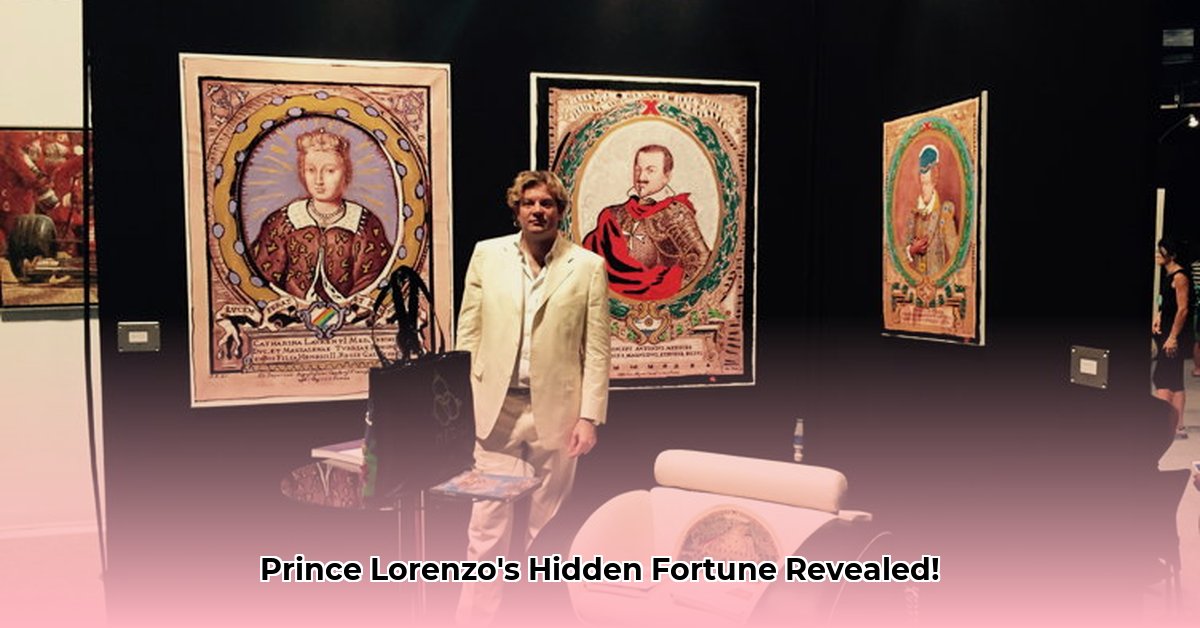
Prince Lorenzo de' Medici's Net Worth: Unmasking a Renaissance Fortune
Determining Lorenzo de' Medici's precise net worth presents a formidable challenge for historians. The lack of standardized accounting practices in 15th-century Florence, coupled with the fluctuating value of Renaissance currencies (like the florin), makes direct comparisons to modern monetary values inherently problematic. How, then, can we even attempt to estimate the wealth of this influential figure? The answer lies in a multifaceted approach that considers several key aspects. For comparison, see this analysis of another wealthy historical figure's wealth: Aurelio De Laurentiis's Net Worth.
The Medici Family Bank: A Dynasty Built on Banking
The Medici family’s extraordinary wealth wasn't a sudden occurrence; it was the culmination of generations of shrewd financial management. Giovanni di Bicci de' Medici, Lorenzo's grandfather, is largely credited with transforming a modest family business into an international banking powerhouse. His financial acumen and strategic partnerships laid the foundation for the family's future dominance, setting the stage for Lorenzo's own considerable achievements. Giovanni's success demonstrated the power of innovative banking practices in amassing extraordinary wealth during the Renaissance.
Estimating Lorenzo's Fortune: Navigating the Challenges
How much wealth did Lorenzo de' Medici personally control? Historians offer widely divergent estimates, ranging from tens of millions to billions of dollars in present-day equivalents. These discrepancies reflect the immense difficulties in translating 15th-century financial data into modern contexts. Different methods of estimation exist, each with limitations, resulting in wildly varying outcomes.
How can we reconcile such divergent figures? The answer lies in recognizing that different approaches yield different results.
| Estimation Method | Estimated Net Worth (USD Equivalent) | Key Considerations |
|---|---|---|
| Conservative (basic inflation adjustment) | $100 million - $300 million | Relies on readily identifiable assets and simple inflation calculations; underestimates true wealth. |
| Moderate (including asset valuation) | $500 million - $1 billion | Includes estimated values for art collections and other assets; remains a conservative estimate. |
| Aggressive (considering political power) | Billions of USD | Incorporates the immense value of political influence, a difficult but essential factor to consider. |
This table illustrates the considerable uncertainty surrounding Lorenzo’s accumulated wealth. The vast discrepancies underscore the inherent challenges in translating historical financial data into modern terms.
Did Lorenzo de Medici's wealth solely reflect assets in gold and silver? The answer is clearly no. The range of assets associated with the Medici family extends far beyond simple monetary values. How, then, do we account for other assets?
Beyond the Numbers: A Multifaceted Assessment
Lorenzo’s wealth extended far beyond liquid assets. The Medici family controlled extensive landholdings, strategic business partnerships, and priceless art collections – all of which must be considered when attempting to evaluate the scale of Lorenzo’s fortune. The Uffizi Gallery, a testament to the Medici family's patronage, represents a significant component of their overall wealth, yet its exact worth in 15th-century terms is difficult to determine. Furthermore, the family's political influence, while impossible to accurately quantify, contributed significantly to their overall financial power. Their ability to secure favorable loans and manipulate political systems provided them with considerable leverage and intangible assets unavailable to their contemporaries.
Money and Power: A Symbiotic Relationship
The Medici family's success wasn't solely driven by financial acumen; their political influence played a critical role in their ability to amass and maintain their wealth. Their banking operations provided them with a considerable degree of political leverage, allowing them to fund campaigns and effectively determine the outcome of elections. This symbiotic relationship between wealth and political power further complicates the estimation of their net worth. Was this success a result of exceptional skill or exploitation of the system? This question remains a subject of ongoing historical debate.
How, then, do we effectively measure the immeasurable? A nuanced approach is required.
Measuring the Immeasurable: A Holistic View
Precisely quantifying Lorenzo de' Medici’s net worth remains elusive. A holistic approach is necessary to fully appreciate the significance of the Medici dynasty's wealth. This involves combining available quantitative data with qualitative assessments of their landholdings, political power, and cultural influence. It's a matter of understanding their overall impact, recognizing the limitations of trying to reduce their complex legacy to a single numerical value.
This contextual understanding enables us to appreciate the monumental influence of the Medici family. Their story isn't solely about numbers; it’s about the intricate interplay between finance, politics, and culture that shaped the Renaissance. Ongoing research continues to refine our understanding of their impact. What can we learn from this complex historical scenario?
Key Takeaways: Understanding the Medici Legacy
- Accurately assessing the wealth of Renaissance banking families, such as the Medici, presents considerable challenges due to incomplete historical records and the instability of Renaissance currencies.
- While precise figures remain unattainable, the vast extent of the Medici fortune is undeniable, profoundly influencing Renaissance politics, culture, and art.
- Their success stemmed from a combination of innovative banking practices, shrewd political maneuvering, and strategic patronage of the arts.
- Analyzing their wealth requires a multi-faceted perspective, incorporating land ownership, political influence, and art collections.
- Modern equivalent valuations, while useful in providing a comparative framework, should be approached with caution, recognizing the vast differences between the economic landscapes of the Renaissance and the modern era.